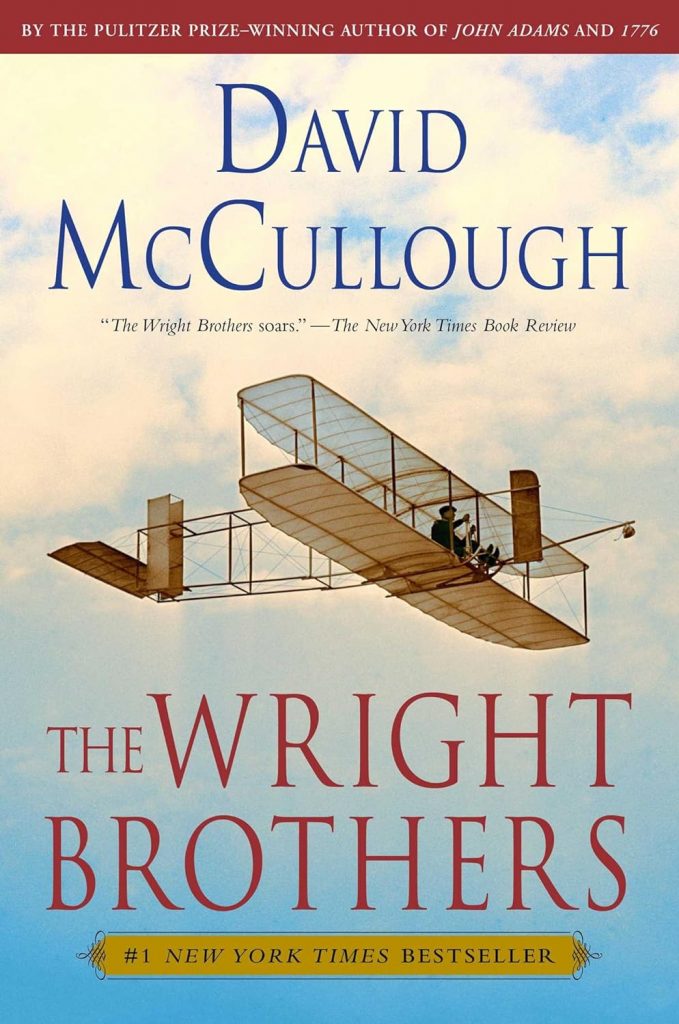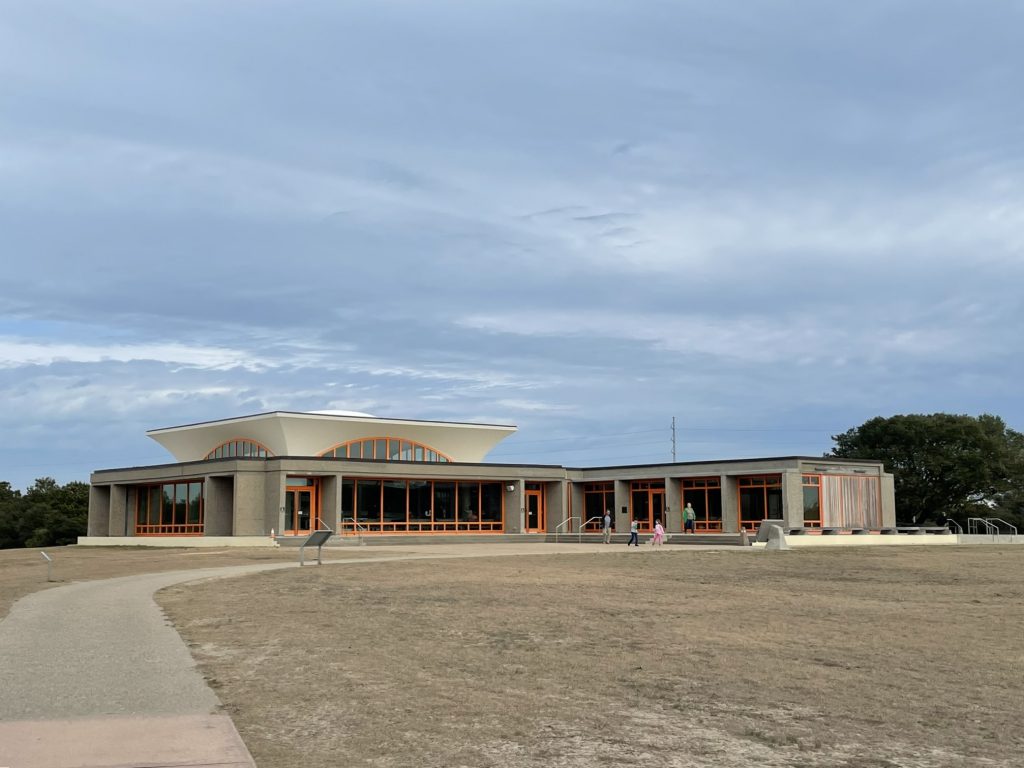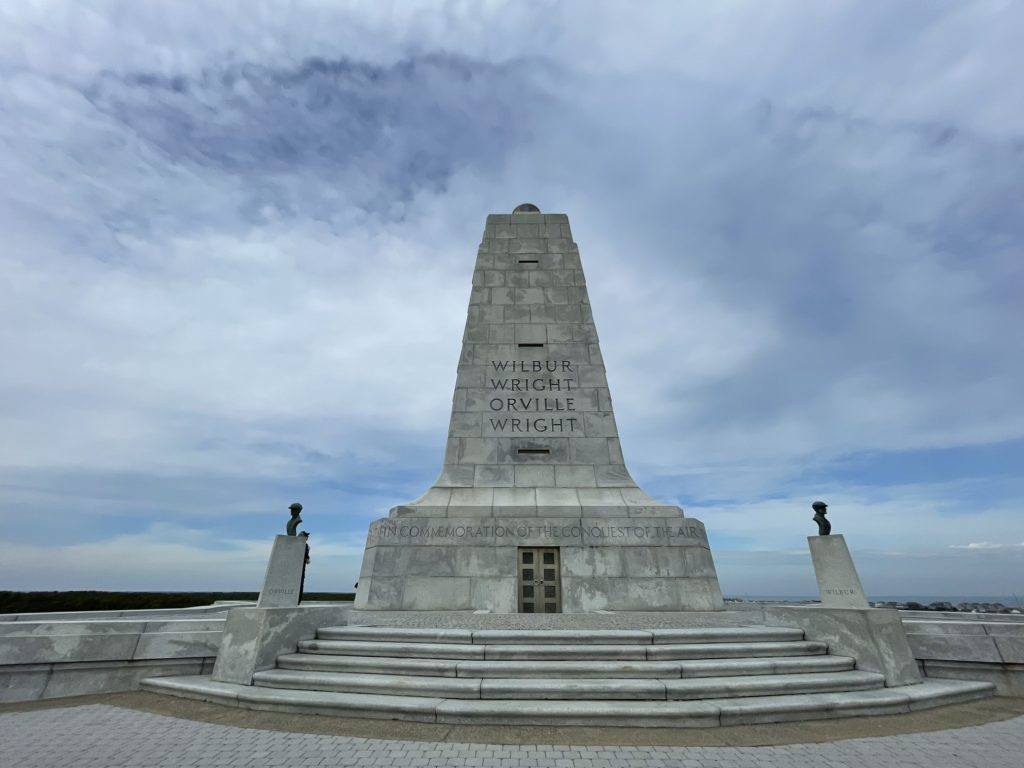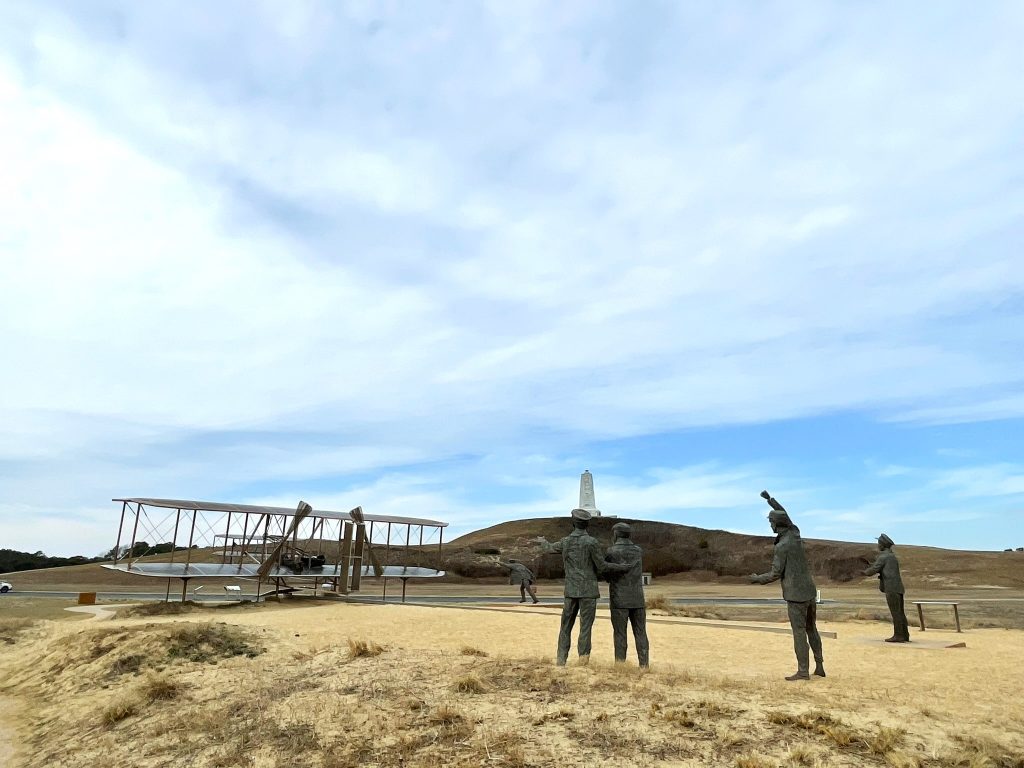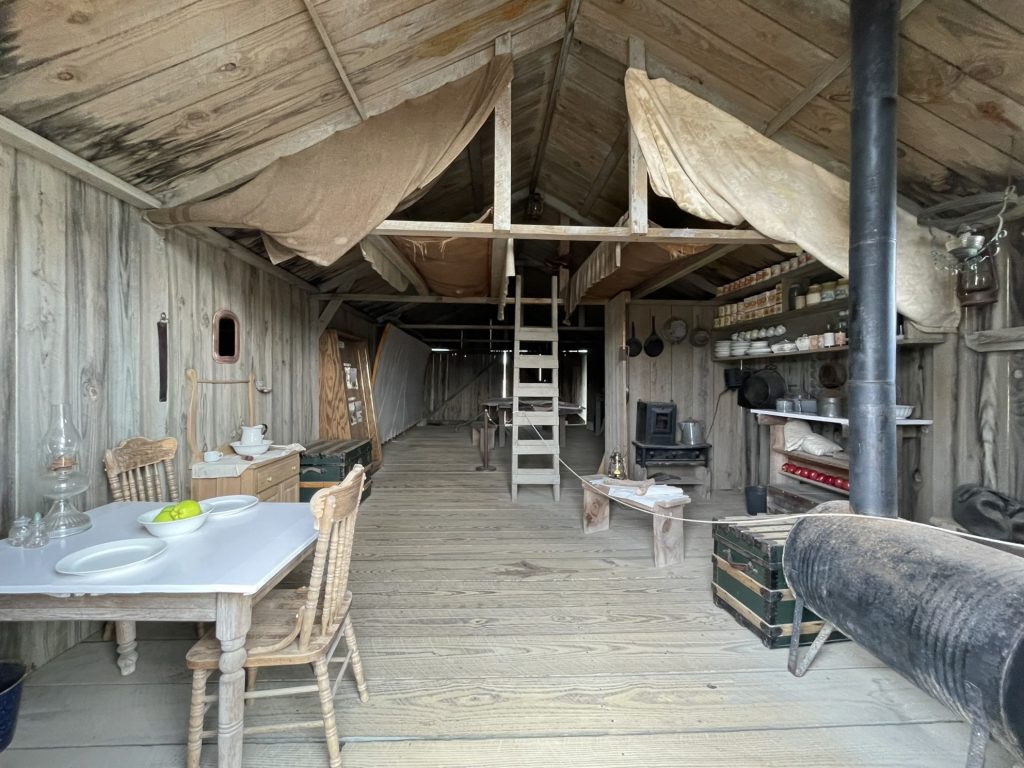The Wright Brothers National Memorial in Kill Devil Hills, North Carolina, is where the first powered flight happened in 1903. You can walk the short flight path of that first flight, and then marvel that just 66 year later humans landed on the moon.
Though based in Dayton, Ohio, Wilbur and Orville Wright choose this area to conduct their experiments for reasons of privacy, steady winds, and soft sandy landings. I’m not sure which of those were most important to their endeavors! At the time, the island was reachable only by boat and only had a population of a few hundred fishermen and their families.
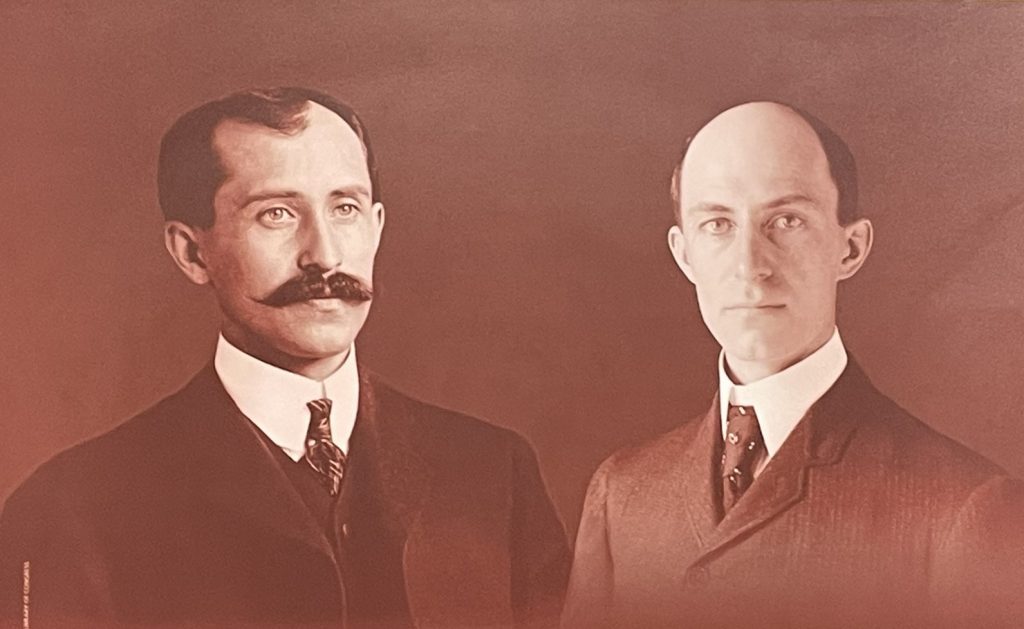
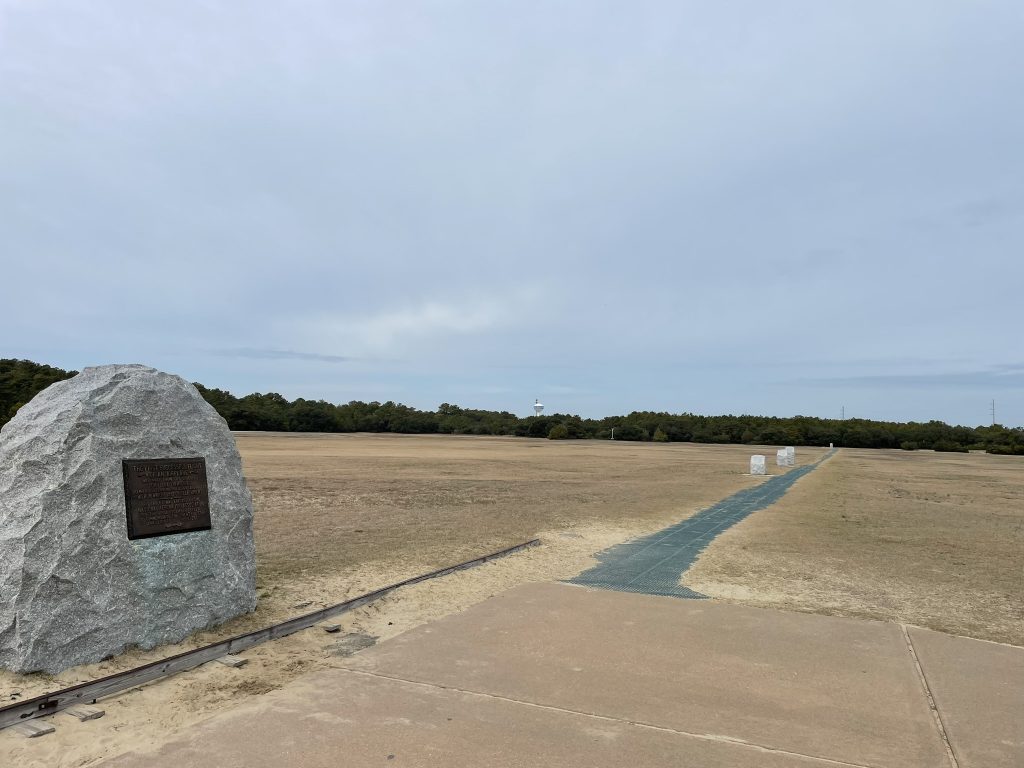
The brothers first ventured to Kitty Hawk in 1900, at which point they were still tinkering with a glider design.
They continued to tinker for the next few years, eventually adding a motor and propellers so that it would truly be flying.
On December 17, 1903 they had their first successful liftoff with Orville at the helm – and landed after a whopping 12 seconds and 120 feet.
The next two attempts (alternating who the pilot was with each attempt) didn’t fare much better, at 12 seconds and 175 feet, followed by 15 seconds and 200 feet.
Attempt number four put them in the history books, with Wilbur flying 59 seconds and going 852 feet! After this exhilarating feat, the boys repaired to their camphouse for lunch, during which time a rogue gust of wind toppled their flyer and destroyed it! The season thus came to a close.
The site is comprised of an “of a period” 1960 Visitor Center with exhibits, the reconstructed camp buildings, and walking the stones marking the flight launches and landings. We also took in a very well-done ranger talk, walked up to the 60-foot-tall memorial tower (which sits atop a 90-foot-tall former sand dune), and then walked over to set of life-sized sculptures commemorating the first flight.
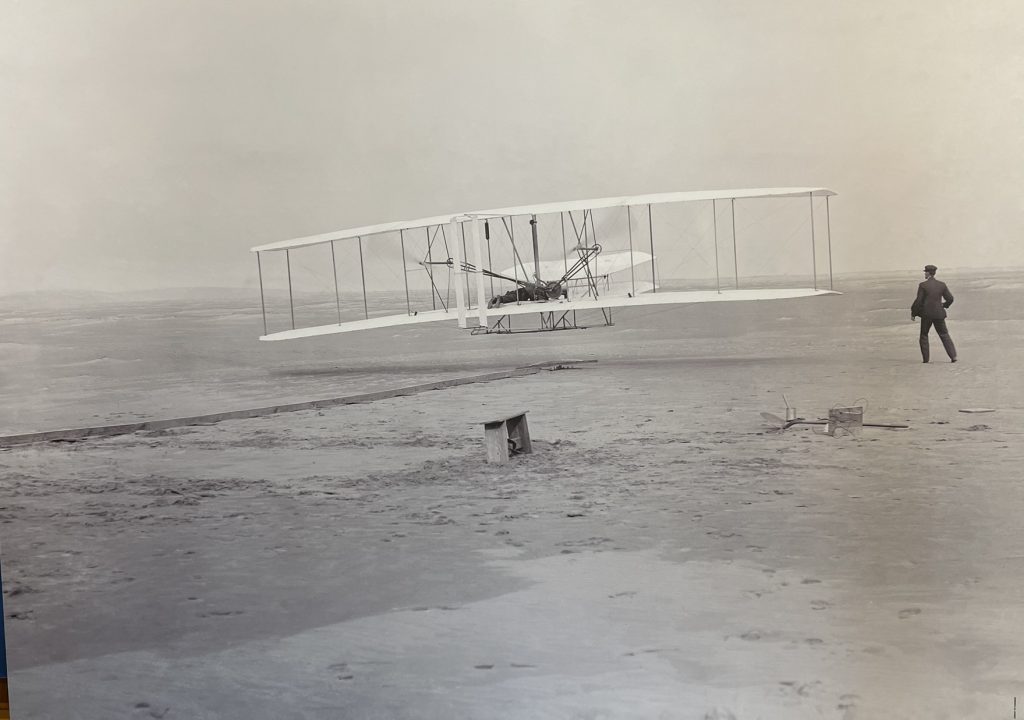
Doug had already read the David McCullough book The Wright Brothers and gave it five stars; I’ve added it to my list, since I’d like to know more about their remarkable story.
The cover photo is the true-to-size replica of the 1903 Wright Flyer; the original is at the National Air and Space Museum in Washington D.C.

